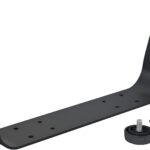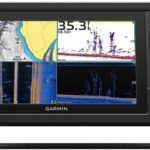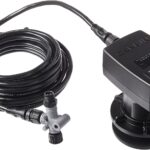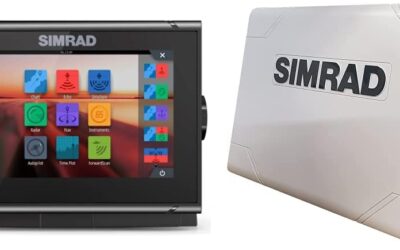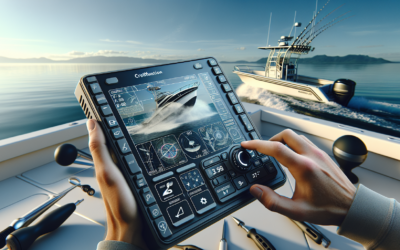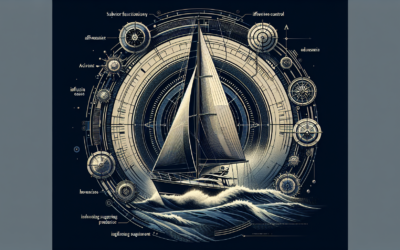In the world of angling, finding the perfect fishing spot can be like searching for a needle in a haystack. However, with the help of fish finders, you can take your fishing game to the next level by targeting specific fish species. These innovative devices use advanced technology to locate and identify fish beneath the water’s surface, allowing you to focus your efforts on your desired catch. Whether you’re a novice angler or a seasoned pro, this article will explore the effective angling strategies that can be employed when utilizing fish finders, giving you the upper hand in your fishing endeavors.
Understanding Fish Finders
What are Fish Finders?
Fish finders are electronic devices used by anglers to locate and identify fish underwater. They utilize sonar technology to send and receive sound waves, which then provide information about the depth, structure, and presence of fish in the water.
How do Fish Finders Work?
Fish finders work by emitting sound waves, or sonar signals, into the water. These sound waves travel through the water and bounce off objects such as fish, the bottom of the water body, or underwater structures. The fish finder then collects the returning sound waves, or echoes, and displays them on a screen as visual representations of the underwater environment.
Types of Fish Finders
There are a variety of fish finders available on the market, each with their own features and capabilities. Some common types include portable fish finders, fixed mount fish finders, and castable fish finders. Portable fish finders are compact and easy to carry, while fixed mount fish finders are permanently installed on a boat. Castable fish finders, on the other hand, can be attached to fishing lines and casted into the water.
Choosing the Right Fish Finder
Consider Your Fishing Environment
When selecting a fish finder, it is essential to consider the environment in which you will be fishing. Factors such as the type of water (freshwater or saltwater), the depth of the water, and the presence of specific underwater structures will influence the type of fish finder that suits your needs.
Understanding Sonar Technology
Having a basic understanding of sonar technology is crucial in choosing the right fish finder. Sonar technology uses sound waves to create a visual representation of the underwater environment. There are two main types of sonar: traditional sonar and CHIRP (Compressed High-Intensity Radiated Pulse) sonar. Traditional sonar sends out a single frequency sound wave, while CHIRP sonar emits a range of frequencies, providing more detailed and accurate information.
Deciding on Display Options
Fish finders offer a range of display options, including color screens, grayscale screens, and high-definition screens. Color screens provide a clearer and more vibrant representation of the underwater environment, while grayscale screens are more affordable and still offer a decent view. High-definition screens offer the best image quality, allowing for more precise identification of fish and underwater structures.
Determining Your Budget
Fish finders come at different price points, so it is essential to determine your budget before making a purchase. Consider the features you need and prioritize what is most important to you. It’s worth investing in a fish finder with better quality if you plan to use it frequently and in different fishing environments.
Identifying Your Target Fish Species
Researching Fish Habitats
To effectively utilize a fish finder, it is necessary to research the habitats of your target fish species. Different fish species prefer different types of environments, such as rocky bottoms, weed beds, or deep holes. By understanding their habitat preferences, you can narrow down the areas to search using your fish finder.
Learning Fish Behavior
Understanding fish behavior is paramount in successfully locating and catching fish. Fish have specific habits and patterns, such as feeding times, preferred depths, and movement patterns. By familiarizing yourself with the behavior of your target fish species, you can interpret the readings on your fish finder more effectively and increase your chances of success.
Identifying Key Environmental Factors
Besides understanding fish behavior, identifying key environmental factors can greatly enhance your fishing experience. Factors such as water temperature, water clarity, and underwater vegetation can significantly affect fish activity and their movements. By taking note of these factors and correlating them with the readings on your fish finder, you can increase your chances of finding fish.
Consulting Local Angling Experts
If you are new to a particular fishing area or target fish species, seeking advice from local angling experts can be tremendously helpful. Local guides or experienced anglers can provide valuable insights on specific techniques or areas where your target fish species are likely to be found. Their expertise combined with the use of a fish finder can greatly improve your chances of success.
Utilizing Fish Finder Features
Selecting the Right Sonar Frequency
Fish finders offer different sonar frequency options, each designed for specific fishing environments and depths. Lower frequency sonars, such as 50 kHz, are better suited for deep-water fishing, while higher frequency sonars, such as 200 kHz or 455 kHz, are more suitable for shallow-water environments. By selecting the right sonar frequency, you can optimize your fish finder’s performance in your fishing locations.
Understanding and Adjusting Sensitivity
The sensitivity settings on your fish finder determine how it interprets the returning sonar signals. Higher sensitivity settings can enhance the detection of smaller fish or underwater structures but may also increase the likelihood of false readings. On the other hand, lower sensitivity settings may filter out smaller fish or structures but provide a clearer and less cluttered view. Experimenting with sensitivity settings and adjusting them according to the fishing conditions will help optimize your fish finder’s performance.
Exploring Doppler Technology
Some advanced fish finders now feature Doppler technology, which measures the movement and speed of objects in the water. This feature can provide valuable information about the activity levels of fish, helping you determine if they are actively feeding or in a more stagnant state. Doppler technology can be particularly useful in detecting fast-moving fish, such as predatory species.
Identifying Fish Arches and Markings
Fish arches and markings are common readings displayed on fish finders. Fish arches, which resemble upside-down U-shapes, indicate the presence of fish in the water column. These arches are created as the fish move through the sonar cone. Additionally, fish markings, which appear as dots or lines, can represent stationary fish or fish close to structures. Learning to recognize and interpret these readings will greatly improve your ability to identify fish.
Utilizing Split-Screen Displays
Many advanced fish finders offer split-screen displays, allowing you to view multiple types of information simultaneously. For example, you can have a sonar view on one side of the screen and a map or GPS display on the other. Split-screen displays can increase your situational awareness and help you navigate while simultaneously locating fish.
Utilizing GPS and Mapping Functions
Fish finders equipped with GPS and mapping functions provide additional benefits beyond locating fish. These features allow you to mark productive fishing spots, create routes, and navigate safely on the water. By utilizing GPS and mapping functions, you can save time and maximize your fishing efficiency.
Interpreting Fish Finder Readings
Analyzing Depth Readings
One of the fundamental readings provided by fish finders is the depth of the water. Understanding depth readings is essential in identifying the appropriate fishing spots for your target fish species. Different fish have specific depth preferences, so knowing the depth will help you eliminate unproductive areas and focus on the ideal fishing zones.
Identifying Fish Schools and Individual Fish
Fish finders can display fish schools, which are groups of fish swimming together. These schools often indicate a higher concentration of fish in the area. By locating fish schools on your fish finder, you can position yourself strategically for more successful fishing. It is also possible to identify individual fish within the schools, allowing you to target specific fish or larger specimens.
Differentiating Between Fish Species
While fish finders can detect the presence of fish, they may not always distinguish between different fish species. However, certain species exhibit distinct sonar signatures or behaviors that can help in identifying them. By observing the fish finder readings and combining them with your knowledge of fish behavior and habitat preferences, you can make educated guesses about the species you are seeing on the screen.
Recognizing Fish Activity Levels
Fish finders can provide insights into the activity levels of fish. Active fish often display faster and more erratic movements on the sonar screen, indicating feeding or chasing prey. In contrast, less active fish may appear as stationary or slow-moving dots. Recognizing these activity levels can help you adapt your fishing techniques accordingly and increase your chances of enticing a strike.
Understanding Temperature and Oxygen Readings
Fish finders equipped with temperature and oxygen sensors offer additional information that can be valuable in locating fish. Different fish species have specific temperature preferences, and certain oxygen levels are necessary for fish survival. By monitoring temperature and oxygen readings on your fish finder, you can identify areas with suitable conditions for your target fish species.
Using Fish Finders for Specific Fish Species
Tailoring Settings for Bass Fishing
Bass fishing requires specific techniques and settings on your fish finder. Bass are often found near structures such as submerged trees, rocks, or weed beds, so adjusting the fish finder’s sensitivity and sonar frequency to detect these structures is crucial. Additionally, being able to identify drop-offs, ledges, or irregularities in the bottom contour will help locate bass hiding spots.
Targeting Trout with Fish Finders
Trout fishing can benefit greatly from the use of fish finders, especially in large lakes or rivers. Trout are frequently found in deeper water, and fish finders can help identify holes, drop-offs, or submerged structures where trout often congregate. Additionally, monitoring water temperature can provide insights into areas where trout are more likely to seek refuge from warmer waters.
Locating Walleye Habitats
Walleye are known for their elusive nature, making them prime candidates for fish finder usage. Walleye tend to inhabit specific areas such as rocky bottoms, weed lines, or transitional zones. By utilizing a fish finder to locate these key features, you can increase your chances of finding walleye and adjust your fishing techniques accordingly.
Finding Catfish Hotspots
Catfish are bottom-dwelling fish, and fish finders can be particularly effective in locating their habitats. Catfish prefer areas with ample cover, so identifying submerged trees, brush piles, or drop-offs can significantly improve your catfishing success. Additionally, monitoring bottom contours and detecting changes in the bottom structure can help pinpoint prime catfish hotspots.
Tracking Salmon and Steelhead Runs
Fish finders are invaluable tools for tracking salmon and steelhead during their annual runs. These fish typically migrate in large numbers and are easily identifiable on a fish finder screen. By tracking their movements and locating the schools, you can strategically position yourself for successful fishing. Paying attention to water temperature and depths at various points along their migration route can also lead to greater success.
Adjusting Techniques for Saltwater Fishing
Understanding Saltwater Conditions
Saltwater fishing presents unique challenges compared to freshwater fishing. Understanding the tides, currents, and salinity levels of the water body you are fishing in is crucial. These factors greatly influence fish behavior and movement patterns, and being aware of them will help you interpret the readings on your fish finder more accurately.
Targeting Inshore Saltwater Species
Inshore saltwater fishing often involves targeting species such as redfish, snook, or speckled trout. These species are often found near structures such as oyster beds, sandbars, or submerged rocks. Utilizing your fish finder to locate these structures and the fish that congregate around them will significantly increase your chances of success.
Finding Offshore Game Fish
Offshore saltwater fishing offers opportunities to target game fish such as tuna, marlin, or mahi-mahi. To locate these fish in the vastness of the open ocean, utilizing a fish finder can be extremely helpful. Look for temperature breaks, underwater structures, or changes in depth to identify areas where game fish are more likely to be found.
Tips for Effective Fish Finder Usage
Choosing the Right Transducer
The transducer is a critical component of a fish finder as it sends and receives the sonar signals. Selecting the right type of transducer for your fishing needs is essential. Consider factors such as the depth of your fishing area, the type of boat you have, and the mounting options available. Transducers can be mounted on the transom (back of the boat), through-hull (inside the boat), or on a trolling motor.
Learning to Read the Screen
Becoming familiar with reading the screen of your fish finder is crucial in interpreting the information it provides. Understand the symbols, color coding, and depth scales displayed on the screen. Practice identifying fish arches, structures, or other indicators commonly seen on the screen. The more you learn to read the screen, the more accurate your interpretations will be.
Mastering Sonar Interpretation
Interpreting sonar readings takes practice and experience. It involves distinguishing between fish, structures, clutter, and various other signals displayed on the screen. Pay attention to the size, shape, and movement patterns of fish arches. Experiment with sensitivity settings and adjust them based on the conditions you are fishing in. Over time, you will develop the skills to accurately interpret sonar readings and increase your fishing success.
Experimenting with Settings
To fully utilize your fish finder’s potential, don’t be afraid to experiment with different settings. Adjust sensitivity, sonar frequency, and display options to find the settings that optimize the performance for your specific fishing needs. Each fishing environment and target fish species may require different settings, so be willing to adapt and refine your settings accordingly.
Regular Maintenance and Calibration
Regular maintenance and calibration of your fish finder are essential to ensure accurate readings and optimal performance. Clean the transducer regularly, checking for any obstructions or damage. Calibrate the fish finder as per the manufacturer’s instructions to guarantee accurate readings. By keeping your fish finder in good condition, you can rely on its performance during your fishing trips.
Combining Fish Finder with Traditional Angling Techniques
While fish finders are powerful tools, they should be used in conjunction with traditional angling techniques. Remember that fish finders provide information about the underwater environment, but ultimately, it is your fishing techniques and presentation of bait or lures that will entice fish to bite. Use the information from your fish finder to guide your decision-making, but don’t solely depend on it for successful fishing.
Common Challenges and Troubleshooting
Interference and Noise Issues
Interference and noise can affect the accuracy and clarity of the readings on your fish finder. Common sources of interference include nearby boats’ sonar signals, electrical equipment on your boat, or even certain types of fish finders operating nearby. To mitigate interference, adjust the frequency or sensitivity settings, change the positioning of the transducer, or switch to a different fishing area with minimal interference.
Dealing with False Readings
Fish finders can sometimes display false readings, such as clutter or ghost images. These false readings can be caused by air bubbles, suspended particles, or debris in the water, as well as incorrect sensitivity settings. To reduce false readings, adjust the sensitivity settings, clean the transducer, and keep an eye out for any debris or air bubbles that may interfere with the sonar signals.
Finding Fish in Challenging Conditions
In challenging fishing conditions, such as extremely murky water or heavy vegetation, locating fish can be more difficult. Fish finders may struggle to provide clear readings in these situations. To overcome these challenges, consider adjusting the settings to increase the sensitivity or employ alternative fishing techniques, such as using baits or lures that create vibrations or rely on scent to attract fish.
Solving Power and Battery Problems
To avoid power and battery problems with your fish finder, ensure that it is properly connected to a stable power source. Inspect the wiring for any damages or loose connections. It is also a good idea to have a spare battery on board or a power bank to ensure uninterrupted use in case of power failures or battery depletion.
Preparation and Safety Measures
Checking Local Fishing Regulations
Before heading out to fish, it is essential to familiarize yourself with the local fishing regulations and any specific rules or restrictions that may apply. These regulations may include fishing seasons, size limits, bag limits, and restricted areas. By abiding by these regulations, you not only contribute to sustainable fishing but also avoid unnecessary fines or penalties.
Ensuring Proper Installation and Mounting
To optimize the performance of your fish finder, ensure that it is properly installed and mounted. Follow the manufacturer’s instructions during the installation process, paying attention to the correct positioning and alignment of the transducer. Improper installation can result in inaccurate readings or damage to the transducer if it is hit by debris or submerged objects.
Preparing for Weather Changes
Weather conditions can change rapidly while out on the water, so it is crucial to be prepared. Check weather forecasts before heading out and make sure you have appropriate clothing and gear for any expected changes. Be aware of potential hazards such as lightning storms, rough waters, or sudden temperature drops, and take necessary precautions to ensure your safety.
Using Safe Navigation Practices
Safe navigation practices are essential for a successful and enjoyable fishing trip. Familiarize yourself with the water body you will be fishing in, including its depths, navigational markers, and any hazards. Observe speed limits and proper boat etiquette to avoid accidents or damage to the environment. Always have the necessary safety equipment on board, such as life jackets and communication devices, and let someone know about your fishing plans and expected return time.
In conclusion, fish finders are invaluable tools for anglers looking to enhance their fishing experience. By understanding how fish finders work, choosing the right one, and utilizing their features effectively, you can greatly improve your ability to locate fish, interpret sonar readings, and ultimately increase your fishing success. Combine the use of fish finders with traditional angling techniques, research your target fish species, and adapt to different fishing environments for the best results. Remember to always prioritize safety and follow local fishing regulations to ensure a responsible and enjoyable fishing experience.

